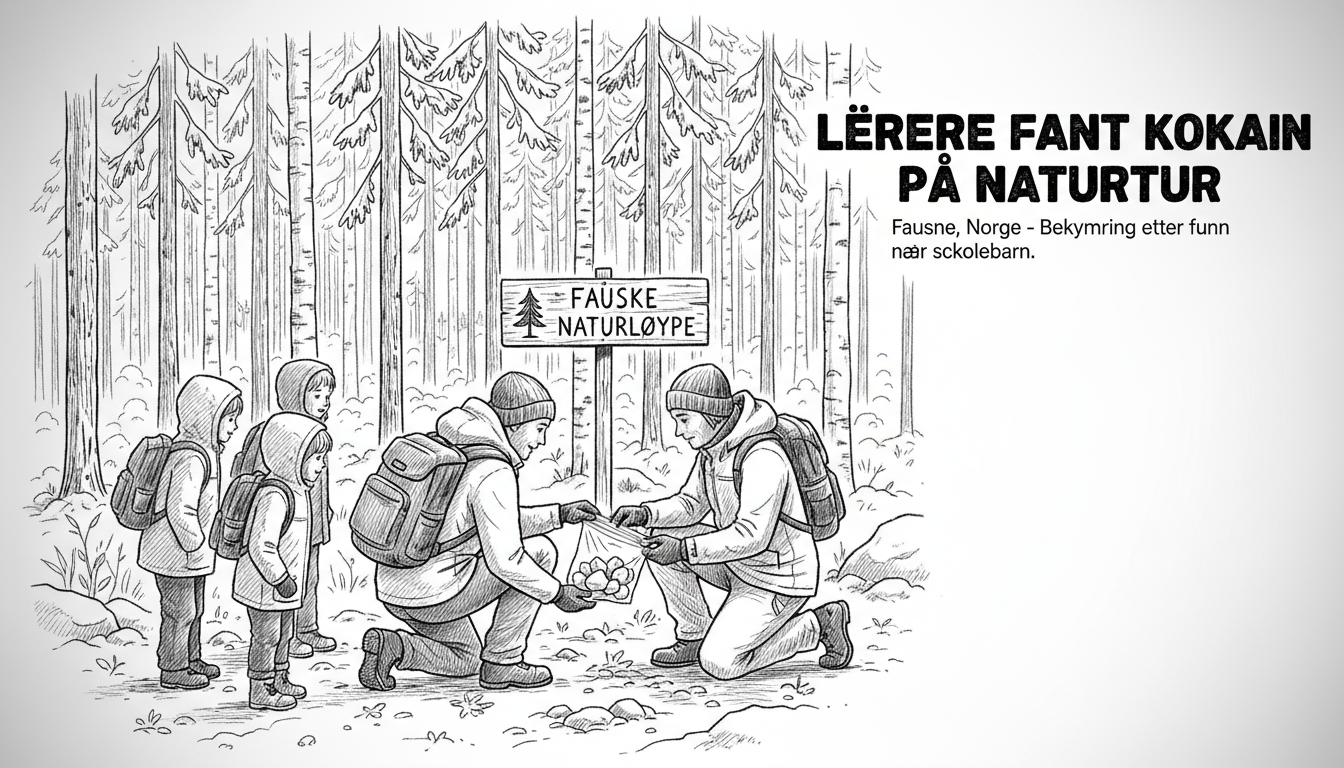Teachers at Vestmyra School in Fauske made a shocking discovery during a nature walk with first graders last week. They found a bag of cocaine in an area called Indianerskogen, known locally as the Indian Forest. This woodland space serves both the school and local kindergarten.
The educators immediately spotted the suspicious package containing white powder. They followed safety protocols and contacted police authorities. Laboratory testing confirmed the substance was cocaine, according to law enforcement officials.
School principal Jan-Åke Andersen described the incident as deeply troubling in a public statement. The school quickly notified all parents and guardians about the concerning discovery. They assured families that children remained safe throughout the incident.
Police Officer Johan Benítez from Fauske Police Station confirmed the test results showed positive for cocaine. He emphasized that police take such incidents very seriously. The officer warned the public against handling unknown substances directly.
That white powder could contain fentanyl or other dangerous substances, he explained. Even minimal contact with certain drugs can create serious health risks. This incident highlights broader concerns about drug availability in community spaces.
Norway maintains strict drug laws with severe penalties for possession and distribution. The discovery in a family-friendly area raises questions about drug enforcement in residential neighborhoods. Local authorities face increasing pressure to address substance issues in public spaces.
Similar incidents have occurred in other Nordic communities recently. Last year, kindergarten staff in Sweden found drug paraphernalia near playground equipment. These discoveries challenge the perception of Nordic countries as largely immune to drug problems.
The Fauske case particularly alarms educators and parents because it involved first graders. These children typically range from six to seven years old. Their natural curiosity could have led to dangerous exposure if teachers hadn't been vigilant.
Norwegian schools often conduct outdoor education as part of their curriculum. The country embraces friluftsliv, or open-air living, as a cultural value. This incident may prompt reviews of safety procedures for outdoor activities.
Police continue investigating how the cocaine ended up in the wooded area. They haven't announced any suspects yet. The case demonstrates how drug issues can surface in unexpected places, even in small Norwegian communities.
What does this mean for international residents and visitors? Norway generally enjoys low crime rates, but drug incidents can occur anywhere. The quick response by teachers and police shows effective safety systems remain in place.
The discovery serves as a reminder that global drug problems don't respect national borders. Even well-regarded Nordic societies face challenges with substance abuse and distribution. This incident will likely spark community discussions about prevention and surveillance in public areas.

